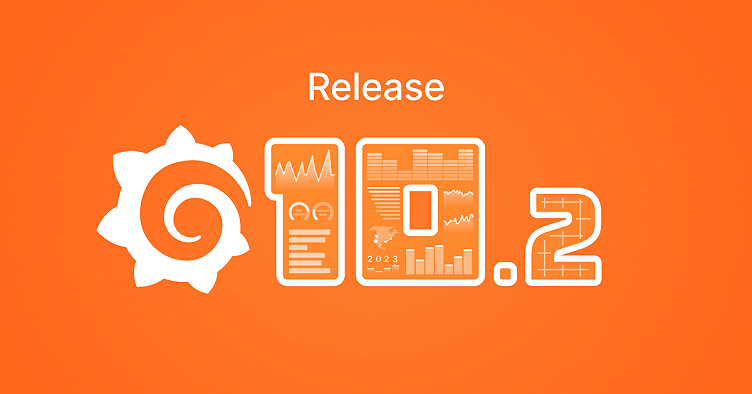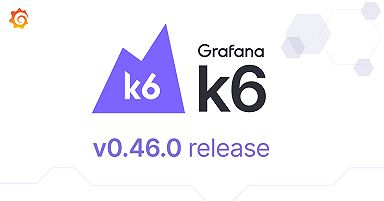
Grafana 10.2 release: Grafana panel title generator, interactive visualizations, and more
Grafana 10.2 is here!
As always, the latest version of Grafana includes a ton of dashboard and data visualization improvements. You can add interactive buttons to your Canvas visualizations; auto-generate dashboard panel titles, and descriptions using AI; and zoom in on specific y-axis values in your time series.
Inspired by Grafana Tempo’s continuing rise in popularity, we’ve also made major improvements to the Tempo data source, including a way to display RED (rate, error, and duration) metrics directly from aggregated traces.
In Grafana Enterprise, we’ve also added new tools to help you better manage user and service account permissions.
Alongside these features are enhancements that streamline alerting processes, improve trace result navigation, and optimize dashboard management.
For a comprehensive overview of the latest updates in this release, please refer to our What’s New documentation.
For in-depth details about each feature, our changelog provides thorough information.
Let’s dive into Grafana 10.2!
Improved (and interactive!) Grafana visualizations
Available in public preview in all editions of Grafana
Dashboards are more dynamic than ever. You can now add interactive buttons to your custom visualizations created in the Canvas panel, giving you the power to directly call specific API endpoints from your dashboards.
Grafana 10.2 also comes with more updates to help extract added insight from your visualizations. When examining time series and candlestick panels, you can now zoom in on the y-axis and drill down on specific value ranges. We’ve also introduced refinements such as gauge styling adjustments and improvements to bar charts — all of which are designed to make your visualizations more intuitive and effective.
Generate Grafana panel titles, descriptions, and change summaries with AI
Available in public preview in all editions of Grafana
What’s in a name? Eh, you don’t even have to worry about that anymore with your dashboards. Now, as you input data into your Grafana dashboards or panels, AI suggests appropriate titles and descriptions, eliminating an extra layer of manual input in setting up your visualization and monitoring system.
Plus, when you make changes to a Grafana dashboard, the system will automatically generate a concise summary of those changes. This feature not only saves time but also ensures that you have a clear history of your Grafana dashboard iterations.
To enable these AI capabilities, you must first enable the dashgpt feature toggle. Then install and configure Grafana’s LLM app plugin. For more information, refer to the Grafana LLM app plugin documentation. For Grafana Cloud users, please open a support ticket to enable this feature.
When enabled, look for the ✨ Auto generate option next to the Title and Description fields in your panels and dashboards, or when you press the Save button.
Share your dashboards with public dashboards, now GA
Generally available in all editions of Grafana
You now have the ability to share your dashboards without requiring anyone to log in. Using the current sharing model, you can create a public dashboard URL and share your Grafana dashboard with anyone. This means your data becomes more accessible to colleagues, stakeholders, or anyone you choose. (Look, Mom, I made this!) If changes are needed, you can pause the dashboard, make updates, and then resume sharing. With public dashboards, your sharing process is both streamlined and flexible.
To learn more, see our public dashboards documentation
Integrate Grafana alerts with Grafana OnCall
Generally available in all editions of Grafana
With Grafana 10.2, you can connect Grafana Alerting to Grafana OnCall, which means your alerts can now seamlessly follow your specified escalation chains and schedules. With this integration, you can also route your alerts, detect trends, and recognize patterns to help improve alert management.
To learn more, see our Grafana OnCall integration for Alerting documentation.
Calculate RED metrics and group trace spans by tags with Grafana Tempo
Experimental features in all editions of Grafana
Use the Metrics Summary feature in Grafana Tempo to aggregate your spans and calculate RED metrics. This gives you direct visibility into request rates, error rates, and duration for your trace spans.
When you select kind is equal to server, you see data by HTTP status code, including span counts, error rates, and latencies from P50 to P99.
For more detail, aggregate by HTTP method and service name to see how your services perform, the methods they use, and the status codes they produce.
To learn more, read our documentation on how to use “aggregate by” to compute RED metrics in the Grafana Tempo data source.
We’ve also rolled out a new TraceQL functionality that allows you to query for multiple span sets per trace and get more targeted search results for your traces. Instead of sifting through a long list of spans and span IDs, this experimental functionality groups spans by specific tags—like service name, hostname, cloud region, or even attributes on the span such as method, URL, or status code.
For example, when grouping by the service name, your results clearly categorize under services like “load generator” or “ride-sharing app.” Clicking on a service link takes you directly to the trace and the specific span, streamlining your navigation and analysis process.
To learn more, see our Multiple span sets per trace documentation.
Incorporate dashboard variables directly into transformations
Experimental in all editions of Grafana
In Grafana 10.2, you can use dashboard variables within transformations to create adaptable panels. Before, only the add field from calculation transformation allowed this. Now, you can apply variables to a range of transformations. For example, you can filter data using a dashboard variable as a threshold or set row limits based on another variable, with the panel updating in real time.
Also, the new muting feature de-emphasizes transformations when they don’t apply to your data. If you have only one data series, the merge transformation grays out since it requires two series to function. Once you add another series, the transformation becomes available again. These updates provide more dynamic panels and a clearer interface to optimize your data visualization tasks.
To learn more, see our Support for dashboard variables in transformations documentation.
Use template variables with the Grafana Pyroscope data source
Generally available in all editions of Grafana
The Grafana Pyroscope data source now supports template variables. You can define variables such as profile type or label and instantly preview their values. Through synchronized variables, you can also modify and apply queries to see real-time data updates in your flame graph. When you adjust the profile type or label, associated label values will dynamically change.
Configure your AWS data source with Temporary Credentials
Available in private preview in Grafana Cloud
Using the CloudWatch data source plugin in Grafana Cloud previously meant generating long-term AWS user credentials and periodically rotating secret keys in both AWS and Grafana.
Now, with Temporary Credentials, you create an IAM role that Grafana assumes to query data. These credentials expire, eliminating the need for manual key rotations. This approach means less work for you to maintain your AWS data sources.
To learn more, see our Temporary credentials in CloudWatch data source documentation.
Navigate and manage Grafana dashboards with the improved dashboard browse function
Generally available in all editions of Grafana
When you open the Dashboards view in Grafana, you’ll immediately notice the absence of the general folder. But don’t worry, dashboards that previously resided in this folder now appear alongside your other folders, streamlining your navigation experience.
Also, performance upgrades ensure that whether you’re viewing 10 or 10,000 items, the experience remains consistent. Folders containing numerous dashboards can be expanded for easy scrolling and searching.
Plus, the new folder view improvements consolidate settings, permissions, and renaming functionalities into one unified interface for easier dashboard management.
To learn more, see our New browse dashboards documentation.
Better access control in Grafana with ‘No basic role’
Generally available in Grafana Cloud and Grafana Enterprise
With the introduction of No basic role, Grafana administrators have more control over access management in Grafana. This new role in Grafana comes with no predefined permissions, allowing admins to use the API or UI to set custom capabilities for certain service accounts or users.
To learn more, see our No basic role documentation.
Learn more about Grafana 10.2
For a comprehensive overview of all the latest updates, refer to our Grafana documentation, changelog, or our What’s new documentation.
You can also join the conversation on our Grafana Labs community forums. Share your thoughts on the new features, discuss best practices, and explore innovative ways to integrate these updates into your dashboards and visualizations.
Upgrade Grafana now
Download Grafana 10.2 today or explore all the new Grafana features on Grafana Cloud, which offers a generous forever-free tier and tailored plans to suit every requirement. Start visualizing your data with Grafana Cloud for free today!
For guidance on upgrading your current Grafana setup, please refer to our upgrade guide.
A heartfelt thank you!
A massive shout-out goes out to our dedicated Grafana community. Your contributions — from PRs to feedback — play a pivotal role in making Grafana better with each release. Your passion and commitment also drive our teams at Grafana Labs to always innovate and improve.


